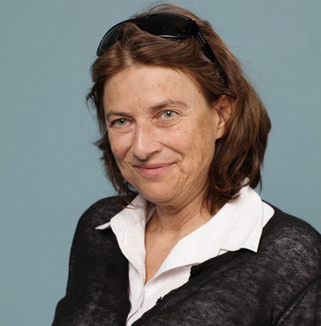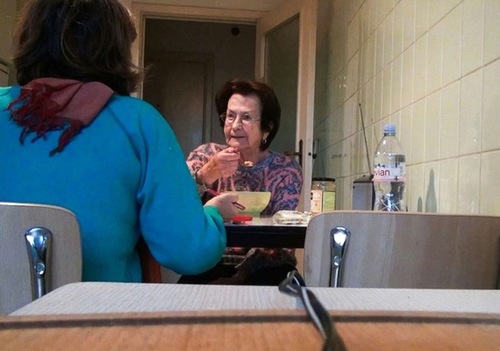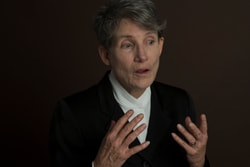 Chantal Akerman
Chantal Akerman
Jeanne Dielman is an unusual film. It runs about three hours and twenty minutes, during which we watch a lonely World War II widow go through her routine of household chores: cooking, cleaning, and shopping. It appears to be making film history with the world’s longest dramaturgical taxi down the runway… until we realize that what we mistook for a numbing prelude is, in fact, the life-and-death conflict of the protagonist. She is imprisoned by her routines, suffocating from them, even as she leans into them to preserve her sanity.
And then the camera cuts away to a scene where Jeanne is sitting at a table in her apartment, in the blood-spattered blouse. She just sits. For six or seven minutes, she just sits. And we sit with her. After a few minutes, she shifts position. After another few minutes, she appears to stretch and relax somewhat. Something like a prototype of a smile crosses her tense face… and then the credits role. (Note: The above video clip includes the john and the killing. If you want to see just the final scene, it begins at 4:50.)
 Chantal with her mother
Chantal with her mother
“She never wanted to speak about Auschwitz… I asked her once to tell me more, and she said, ‘No, I will get crazy.’ So we could speak around, or after, or before, but the real moment, never. Not directly.”
I have the feeling that this Auschwitz legacy informs Jeanne Dielman, and especially the ending. Perhaps this is Chantal speculating on just what that “get crazy” might look like.
In any event, she spends a long time cinematically speaking, showing us the immediate aftermath. Watching the scene, I supply the narrative: “Oh, here Jeanne is in shock. Her heart is racing. She is holding her breath still. She can’t move. But now, three minutes later, she is becoming aware of some discomfort from not moving. She shifts position. There is a moment where she drops her head… is she assessing the blood on the blouse? Is she making a gesture of surrender? But her head is up again, the same expression. And then, about five minutes in, she shifts her gaze. She appears to stretch. Stretching: a good sign. People do that when they wake up. The do it when they are coming out of cramped positions. And when Jeanne comes out of the stretch, I swear I see a ghost of a smile. Or am I just imagining it? I keep returning to this scene to be sure. I would swear that she has arrived in her own life. Finally.
Watching that final scene of Jeanne Dielman, I thought of that pumping of the monarch butterfly… In the utter stillness of Jeanne’s posture and expression, I imagined a similar subtle pumping, something connected to her heart and to her breath, but now—post-emergence—with the special mission of actualizing some kind of mechanism for flight. In those endlessly intriguing six minutes, I imagine I am watching the incarnation of a woman with agency, a woman who has emerged, for better or worse, from patriarchy.
I have watched this scene a half-dozen times, and I feel an internal pumping in myself every time I watch it. I am studying Jeanne Dielman. Have I emerged? Am I arrived at myself?

 RSS Feed
RSS Feed
